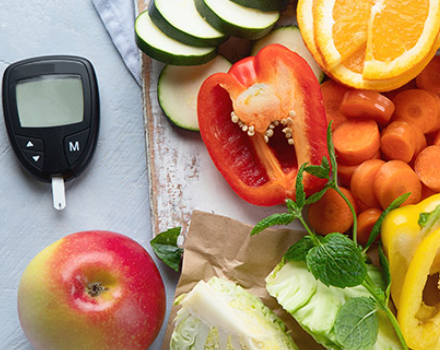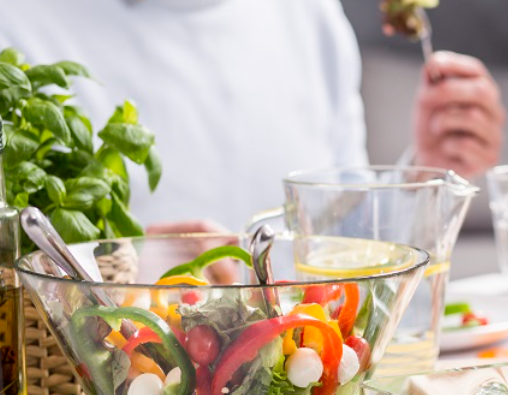
Carbohydrates are a vital part of our diet, providing a primary source of energy for the body. However, not all carbohydrates have the same effect on blood sugar levels. This is where the Glycaemic Index (GI) comes in—a useful tool to help us understand how different foods affect blood sugar and how we can make better food choices.
In this article, we’ll explore what the Glycaemic Index is, how it works, and how it can be applied to promote healthier eating habits, especially for those managing blood sugar levels, such as people with diabetes or prediabetes.
What is the Glycaemic Index?
The Glycaemic Index is a scale that measures how quickly carbohydrate-containing foods raise blood sugar levels. Foods are ranked on a scale of 0 to 100, with pure glucose serving as the reference point at 100. Foods that are rapidly digested and absorbed have a high GI, leading to quick spikes in blood sugar. Conversely, foods that are slowly digested have a lower GI, providing a more gradual increase in blood sugar.
How is GI Calculated?
To determine the GI of a food, participants are given a portion containing 50g of carbohydrates from that food. Their blood glucose levels are measured over two hours, and the average response is calculated. The GI score is then assigned based on how the food compares to glucose, which has a GI of 100.
- Low GI: Below 55 (e.g., most fruits and vegetables, beans, lentils)
- Medium GI: Between 55 and 70 (e.g., wholemeal bread, basmati rice)
- High GI: Above 70 (e.g., potatoes, white bread)
How Can Knowing the GI of Foods Help?
Understanding the GI of foods can be especially beneficial for managing blood sugar levels, particularly for people with type 2 diabetes. Research shows that regularly consuming low-GI foods can help regulate blood glucose levels over time, preventing the sharp spikes and crashes associated with high-GI foods. However, for those with type 1 diabetes, the evidence is less clear, though lower GI foods are still recommended to reduce blood sugar fluctuations.
While GI is helpful, it’s important to note that not all low-GI foods are necessarily healthy. Some low-GI foods, like milk and white chocolate, may have a low GI but are still high in fats and sugar, which aren’t ideal for regular consumption. Therefore, it’s crucial to consider the overall nutrient profile of the food, not just its GI.
Factors That Influence the GI of Foods
Several factors can affect the GI of a food, including its preparation method, processing, and its nutrient content. Here are some key influences:
- Cooking and Preparation Methods
The way food is prepared can alter its GI. For example, overcooking starchy foods like pasta and potatoes can increase their GI by making them easier to digest. Conversely, cooling and reheating these foods can lower their GI by creating resistant starch, a type of fiber that resists digestion. - Food Processing
Highly processed foods generally have a higher GI. The more processed a food is, the more its natural fiber and structure are broken down, making it easier for the body to absorb and digest. For instance, white bread has a higher GI than whole grain bread because the former is more processed. - Macronutrients
Foods that contain higher amounts of protein and fats tend to have a lower GI because these nutrients slow down the digestion process. For example, dairy products, while containing natural sugars (lactose), have a lower GI due to their protein and fat content. - Fiber Content
High-fiber foods, particularly whole grains and vegetables, have a lower GI because fiber slows the digestion of carbohydrates. Fiber also helps regulate blood sugar levels over time, promoting better control. - Ripeness
As fruits ripen, their starches break down into simple sugars, which raises their GI. For instance, green bananas have a GI of around 40, but once ripe, the GI can increase to around 65.
Healthier GI Swaps
If you’re looking to lower your GI intake, here are some simple swaps to consider:
- Choose wholegrain bread instead of white bread.
- Opt for roasted potatoes with the skin on instead of mashed potatoes.
- Replace refined cereals with wholegrain options like oats or Shredded Wheat.
- Use quinoa or bulgur wheat instead of couscous.
- Try lentil or bean-based pasta instead of regular wheat pasta.
Limitations of the GI
While the GI can be a helpful guide, it does have its limitations:
- Portion Sizes Aren’t Considered
GI is based on a 50g carbohydrate serving, but portion sizes vary. A smaller portion may have a lower impact on blood sugar than the GI suggests. This is where Glycaemic Load (GL), which takes both GI and portion size into account, becomes more useful. - Food Combinations Aren’t Considered
The GI of a food is measured in isolation, but most meals consist of multiple ingredients. For example, adding fiber or protein to a high-GI food can lower its overall GI when eaten in combination, such as adding vegetables or protein to pasta. - Individual Responses
GI is based on average responses to foods, but individual reactions can vary. Factors like gut microbiota, insulin sensitivity, and metabolic health can influence how a person’s blood sugar responds to different foods. - Low GI Doesn’t Always Mean Healthy
Some low-GI foods, like milk chocolate and sausages, are still processed and high in unhealthy fats or sugars. It’s important to focus on whole, nutrient-dense foods, rather than just choosing foods based solely on their GI.
What About Glycaemic Load (GL)?
Glycaemic Load is another important measure that considers both the GI and the portion size of a food. A food with a high GL (above 20) will significantly affect blood sugar, while foods with a GL between 11 and 19 have a moderate effect, and those with a GL below 10 have minimal impact.
GL is a more practical approach to managing blood sugar because it adjusts for portion size. For example, watermelon has a high GI of 76, but its GL is only 5 due to its low carbohydrate content in a typical serving.
How to Use GI and GL in Food Choices
When selecting foods, prioritize lower GI and GL options, such as whole grains, fruits, vegetables, and legumes. These foods help stabilize blood sugar levels. Higher GI foods can be useful before or after intense exercise for a quick energy boost or for managing low blood sugar (hypoglycemia). Pairing high-GI foods with low-GI options can help mitigate blood sugar spikes.
Conclusion
The Glycaemic Index is a helpful tool for understanding how different carbohydrates affect blood sugar levels. By choosing lower GI foods more often, you can help manage blood sugar and improve long-term health. However, it’s important to also consider portion sizes, food combinations, and the overall nutrient quality of your diet. For optimal health and blood sugar control, focus on whole, minimally processed foods that are rich in fiber and balanced in nutrients.










